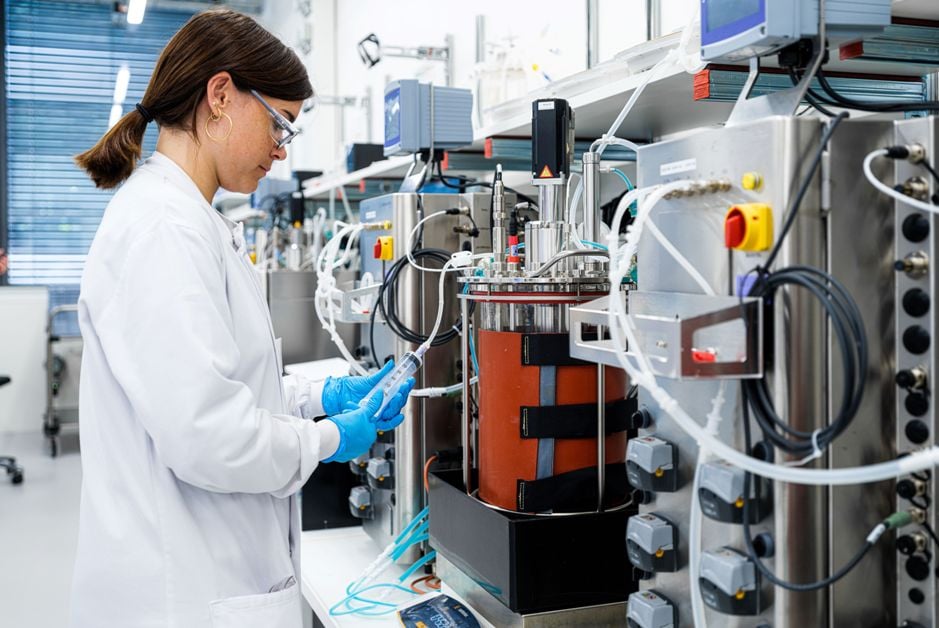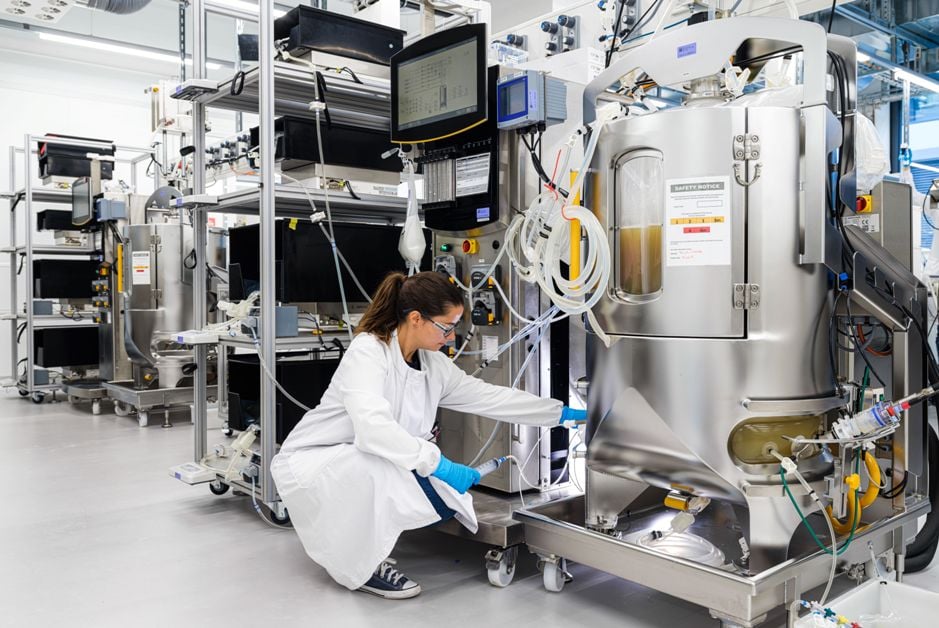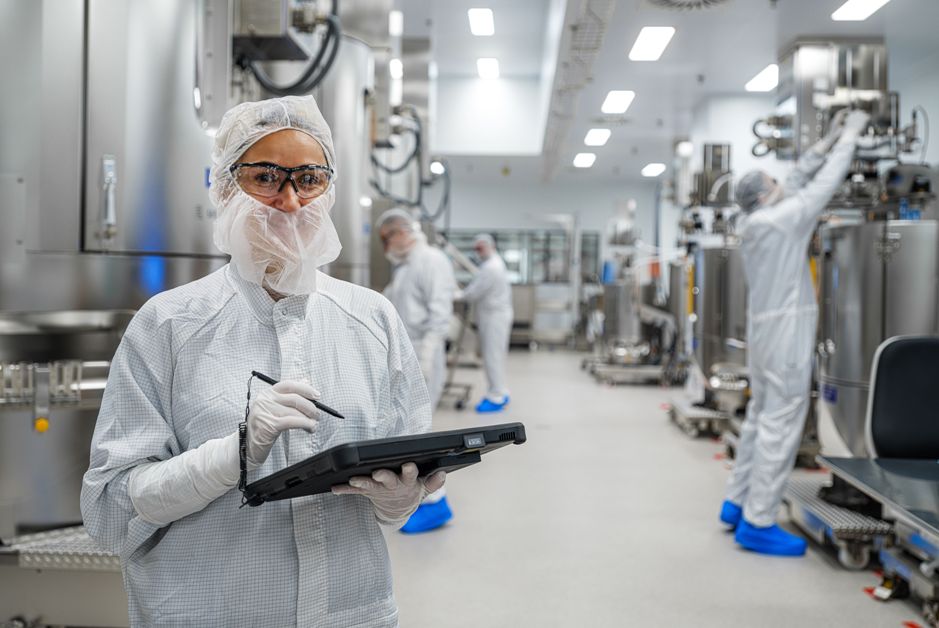Newsletter Signup - Under Article / In Page
"*" indicates required fields
Tech transfers play a vital role in ensuring that medicines reach patients on time. We explore the different stages of tech transfer, and the critical factors that can help biotechs optimize their biologics transfer projects.
The healthcare industry aims to efficiently deliver innovative therapies to those in need. Tech transfer, the process of transferring knowledge, skills, and technology, is a pivotal mechanism for enabling this adequate and timely access to medicines.
Tech transfer across the drug life cycle
According to Angela Armanni, Head of Process and Technology Transfer, Drug Product Services at Lonza: “Tech transfer happens between a sending and a receiving site, which can be located either within the same facility, or in facilities across different geographies.”
“Tech transfer is conducted to support clinical teams in their development efforts. The goal is to empower the receiving site to execute tasks already being conducted by the sending site.”
The need for tech transfer can arise at any stage of the drug lifecycle.
“In early development phases, tech transfer can be used to scale-up the production of a drug that is to be evaluated in clinical trials”, explained Matthew Jones, Director, Head of Manufacturing, Science & Technologies (MSAT) at Lonza.
“This type of tech transfer is often used by biotechs to increase production capacity, usually by transferring manufacturing processes from a developmental laboratory to a larger facility. Such early phase transfers are also instrumental in ensuring adherence to regulations like Good Manufacturing Practice (GMP) standards”.
Later in the life cycle, in late-phase trials, tech transfer comes into play to adapt to changing material requirements. This can entail adjustments in either the manufacturing scale or in the manufacturing technology within an existing facility.
“Beyond late-stage development, commercial phases may also require tech transfer to meet increased material needs to treat a wider patient population,” added Bhroma Patel, Associate Director, Global Analytical Development at Lonza. “And as a product gains approval for use in more markets, tech transfer continues to remain essential to establish secondary supply sources for the commercialized product.”

The stages of tech transfer for biologics
Irrespective of the scope and goal, the process of tech transfer involves four stages, stated Jones: knowledge transfer, preparation, execution, and close-out.
During the knowledge transfer phase, the sending site shares data on the drug. This can include details on the manufacturing process, quality control procedures and regulatory requirements.
Information availability at this stage varies based on the product’s clinical development phase, caveated Patel.
“Often, data on the product’s potency is limited during early clinical phases, which limits the methodological information available,” she mentioned. “Because of this, the receiving site may have to assess, set up and validate optimal analytical conditions needed for a GMP-aligned production.”
“In contrast, for transfers in late clinical phases or post commercialization, manufacturing protocols tend to be more established. This would demand a close alignment between the established methods used in the sending site, and those implemented by the receiving site.”
If the implemented methods change significantly during the transfer, revalidation and bridging of data might be required to support historical clinical data, cautioned Jones.
The second stage constitutes preparing the receiving site for manufacturing. This includes planning for the transfer by identifying and obtaining necessary resources, establishing that current equipment capabilities meet the project’s needs, and developing timelines.
The third stage focuses on execution, during which the receiving site commences manufacturing with guidance from the sending site. The fourth close-out stage involves reviewing the process, making necessary adjustments, checking the necessary documentation is in place, and ensuring independence at the receiving site.
It is important to highlight that the four stages generally stay consistent across drugs. Yet, as Armanni pointed out, the complexity of the tech transfer can differ based on the drug type.
For instance, optimizing tech transfers for biological products can be more challenging than for small molecules, as the former are more sensitive and complex to manufacture, store, test, and characterize. Nonetheless, such challenges can be mitigated by understanding and optimizing factors that influence the success of tech transfers.

Critical success factors for optimal tech transfer
To begin with, ensuring process compatibility between sites is critical for successful tech transfer, emphasized Armanni.
Specialist contract manufacturing and development organizations (CDMO) like Lonza ensure this compatibility by utilizing a detailed gap assessment, she explained. “We initiate every tech transfer project with a side-by-side comparison of operations at sending and receiving sites, closely scrutinizing all the available information.
“Our goal is to reach a shared understanding between sites, while identifying any relevant gaps crucial to the transfer, including any critical information that might not be explicitly documented. Following this, we evaluate the identified gaps to determine whether mitigation actions are necessary, and make appropriate recommendations.”
In some such cases, another challenge might arise: project teams may not have the necessary context and may oppose the implementation of critical adaptations recommended.
This makes it essential to explain the importance of certain requirements – especially those posed by regulators – as well as align expectations on the scope of the tech transfer. Not having these conversations early on with project teams could jeopardize successful execution of the transfer.
Elaborating on another critical factor when kick-starting tech transfer, shared Jones: “Engaging the teams with the right expertise on both the sending and receiving ends for the transfer process is vital, especially in the biologics sector.”
Biologic tech transfer teams need to be cross-functional due to the complexity of the end-product. This entails having subject matter experts (SMEs) with specialized knowledge and skills.
“Such a team benefits even more from a tech transfer lead who acts as a bridge among the specialized SMEs, ensuring a cohesive approach throughout the transfer by anticipating potential technical challenges,” Armanni continued.
Another key element for tech transfer success lies in jointly developing and transferring analytical methods alongside the manufacturing process. Neglecting this aspect can introduce variations in product quality between manufacturing sites, and can adversely impact clinical studies.
“In fact, small configuration differences can lead to widely varying results, even with the use of seemingly identical equipment,” cautioned Patel. “Such discrepancies become especially evident in late-phase or commercial method transfers.”
Thus, adhering to a consistent and structured approach can prove crucial in maintaining consistency and comparability of the product manufactured across sites, which is vital for maintaining compliance.
Lastly, tech transfer timelines must be closely monitored to ensure an adequate supply for clinical programs. With the ultimate goal of helping as many patients as possible, an efficient and speedy transfer serves as a facilitator for successful trials.
An expert-driven, flexible, and future-ready approach to tech transfer
Overall, technical knowledge, regulatory alignment, and effective communication are key to addressing challenges involved in tech transfer. Working alongside a qualified team to develop a detailed transfer plan, identify resources, and manage the process can ensure success.
“The key value-add of leveraging Lonza’s 40+ years of experience and over 150 processes transferred, lies in the potential of process improvements that we can help achieve,” Armanni said. “Our expertise in the biologics space enables us to deliver more efficient quality-focused tech transfer processes, while strictly adhering to GMP standards.”
Close engagement with cross-functional experts across sites is a central focus in Lonza’s approach, highlighted Jones. “Our experts are adept at proactively identifying where platform methods and technologies can accelerate projects, while also discerning when bespoke solutions are required.
To cater to the latter, Lonza’s modular approach allows for different entry points during tech transfer, taking into account factors such as the latest regulatory requirements and a company’s existing processes and knowledge.
“The flexibility we offer helps foster a collaborative approach to challenges that our customers face, leading to successful outcomes,” Jones continued.
Looking to the future, Armanni predicted: “Data-driven approaches using artificial intelligence and big data hold the promise to help accelerate tech transfers, even enhancing overall quality and success rates.”
Jones and Bhroma shared this vision of the future, where these technologies could aid in identifying opportunities, implementing strategies and tracking progress in tech transfer projects.
Ultimately, when done correctly, tech transfer can help increase production, improve quality, comply with regulations, and even streamline resources. By embracing tech transfer enablers, and seeking expert guidance, Jones concluded that successful outcomes in first transfer attempts no longer remain out of reach.
To hear more from Matthew Jones on how to implement effective tech transfer for biopharmaceuticals, check out this recent webinar.
Click here to learn more about how you can partner with Lonza to overcome your tech transfer challenges and produce high-quality products in a scalable way.
Images courtesy: Lonza






